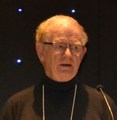Making Nature Count in the Town of Gibsons – celebrating and showcasing 5 years of leading by example

The Town of Gibsons is the Living Laboratory for the Municipal Natural Assets Initiative. It is also a demonstration application for Sustainable Watershed Systems, through Asset Management. “Investing in nature has proven to be rewarding in terms of reduced operational and capital expenditures, increased resiliency to climate change and improved environmental management of the Town’s infrastructure,” stated Emanuel Machado.










